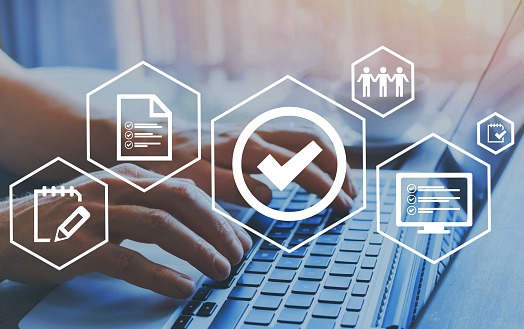
Employee Self Service or ESS for short is a feature integrated into all modern HR software. ESS allows access to a string of data regarding HR, personal data, and such related information. The key highlight of ESS is in its name, Employee Self Service, the data which would otherwise need an HR representative to maintain, is now in the hands of each employee, at least their own data due to obvious privacy concerns. This simple yet highly effective move saves on precious resources such as time and money. Some companies are heavily invested in the idea whereas some may not prefer it due to the size and nature of their own.
ESS is not only for employees but for the management as well, as MSS or Management Self Service is often linked and incorporated within the ESS. This often refers to Managers overlooking and aiding employee matters that were needed, but more importantly, having an administrator to handle any situation. The link between the hierarchy is, therefore, kept intact much like the integration between the ESS and your HR software.
It is already integrated into the HR systems and requires no extra fiddling around on the back-end. Usually, such self-service portals are under the HR department’s supervision but for greater efficiency, personal log-ins are assigned to the employees. Still, seem a little unconvincing to you? The following host of features will surely provide the clarity and knowledge you need.
Features of ESS
- Personal Info: ESS will allow employees to update their info and personal details by themselves, cutting out the middle-man (HR). This allows for a more streamlined process and prevents long application submission and updating.
- Leaves: Here the employees will have complete access to their current leave situation whether it be related to leave balance or requesting for leaves.
- Programs: Direct log-ins will allow open-access to enroll in benefits programs or other similar schemes.
- Policies/Rules: As policies and rules are often updates, sometimes they may go under the radar of most employees. With ESS a few clicks will get the relevant policies up on your screen.
- Payroll: Financing is a particular field, especially when payroll is involved. With self-servicing, Employees will have complete access to previous salary slips, pay cut information, taxes, time-logs, reimbursements, and all relevant data associated with their payroll in general.
- HR reports: Such analytics will provide the users more clarity in terms of KPI’s and set goals in comparison to their performances during a defined period. This also helps the HR department as a whole.
Benefits of ESS
- Engagement: The ESS tool is great for boosting employee engagement and have them update each detail when required. It acts as a new medium to engage in the existing HR software.
- Greater Efficiency: As each employee is responsible for their own data, this speeds up the process by a large margin and even decreases the chance of mistakes within the details.
- Autonomy: The integrated bit of software from the central management access point allows for the employee to access and edit their data whenever needed without hesitation.
- Ease of burden: The introduction of ESS into an office ecosystem drastically eases the load on the HR department which would manually have to amend any changes requested. Not to mention the processing time it may take to achieve a minor task. HR and Managers do however still have all the admin rights to oversee the changes in order to administer effectively.
- Easy access: Since the system is entirely digital, it acts as the perfect medium for dispersed teams or even when on the go. This saves time on having to reach out to the HR team which may be located in a foreign place.
- Green/Environmentally friendly: An alternative bonus of ESS is the sheer amount of paper being saved. As such office work requires a series of documentation and updates. The system saves a lot of paper while preventing excessive waste.
Is there a catch?
ESS is no doubt a valuable addition to any organization’s arsenal and boasts a series of benefits along with features as mentioned. However, a major drawback would be for each employee to familiarize themselves with the software, as understanding is key for the implementation to be successful. This may lead to communication gaps, incorrect data, and a learning curve from manual to the digital entry system.
If your company is already using an integrated HR Management Software such as PeopleSonic, this won’t be an issue as the interface is very similar to the rest and can easily be adopted into the workflow. As the ESS integration goes hand in hand with HR software, opting for solid HR Management Software shouldn’t be overlooked!


